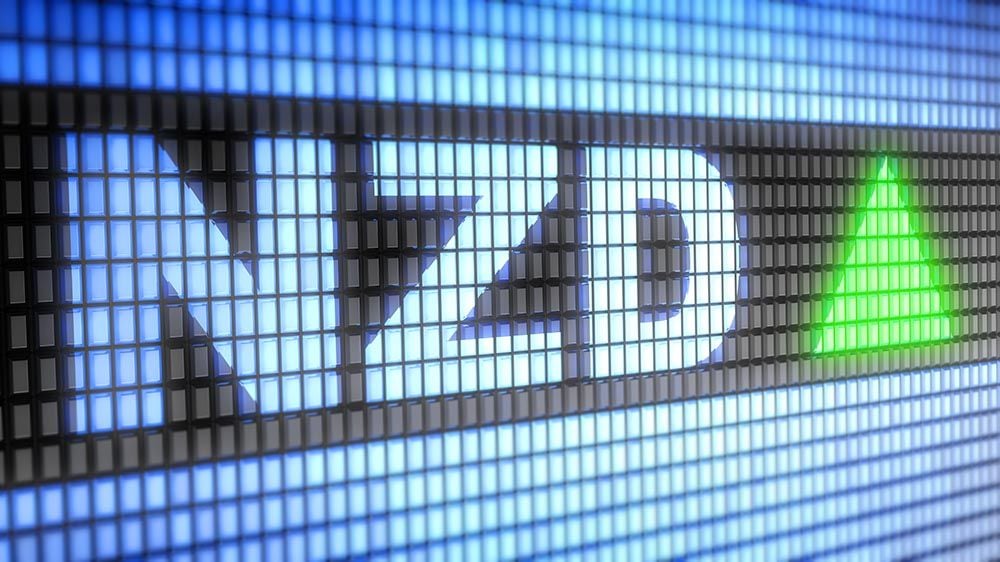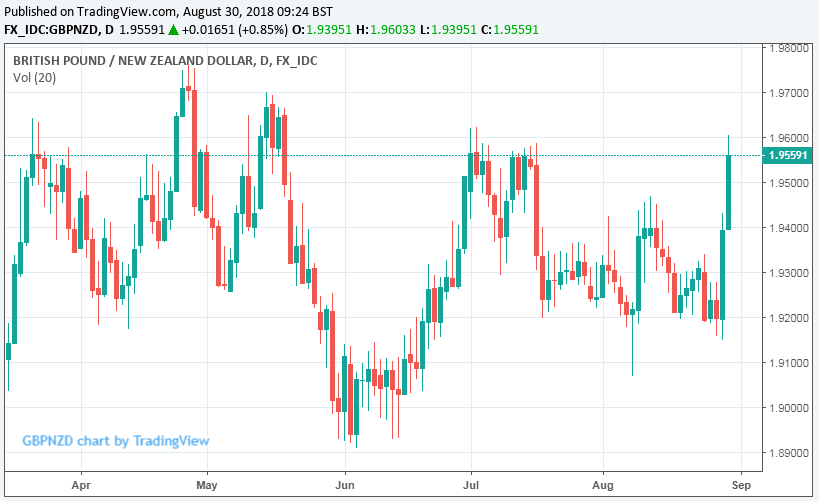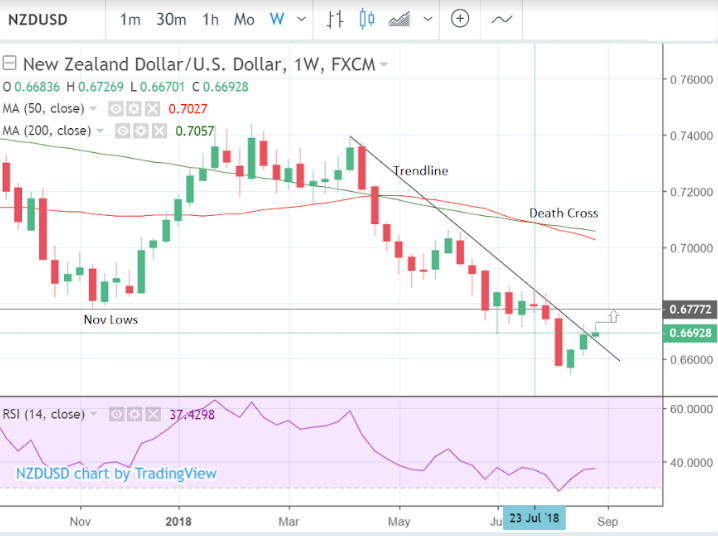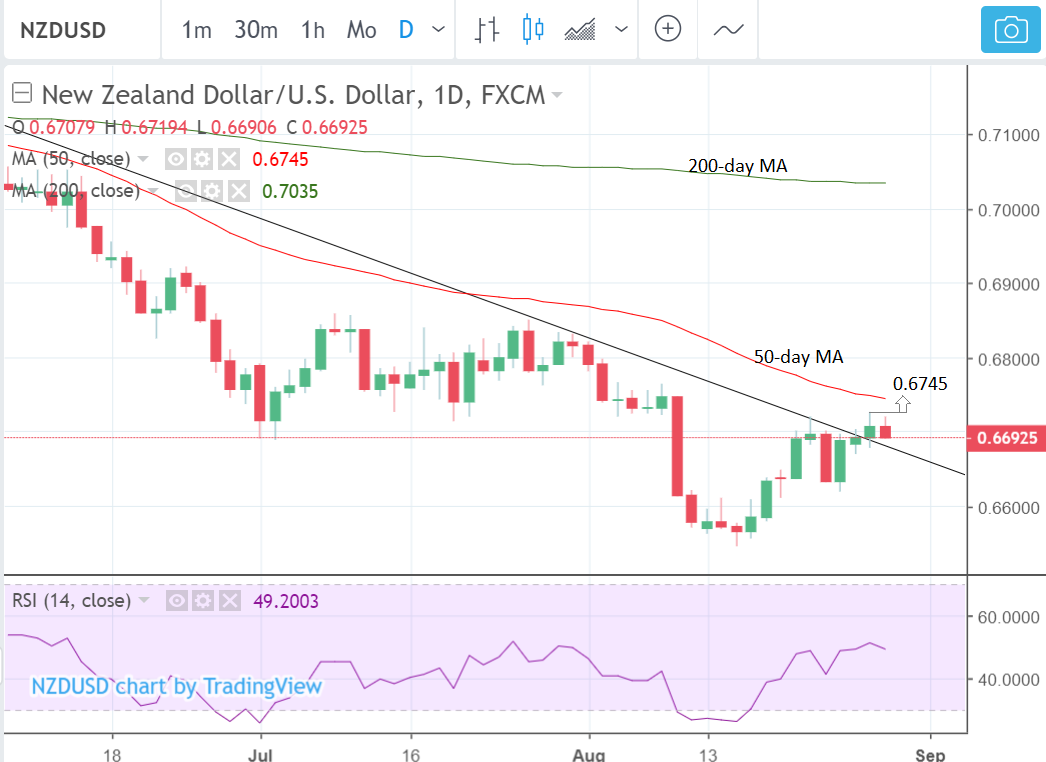New Zealand Dollar Woes Extend after Business Confidence Hits 2008 Low, but Charts Point to Potential Recovery
- NZD slumps after ANZ business confidence hits 2008 low.
- Poses risk to 2018 GDP growth, raises odds of RBNZ rate cut.
- But chart studies suggest scope for an NZD/USD correction higher.

© Pavel Ignatov, Adobe Stock
The New Zealand Dollar slumped Thursday after an influential survey showed business confidence falling to a fresh post-crisis low during August, adding weight to claims the Reserve Bank of New Zealand may soon cut interest rates.
Australia & New Zealand Banking Group's (ANZ) business confidence index fell a further five basis points to -50.3 during August, down from 44.9 back in July, marking its lowest level since April 2008.
This mean a net 50% of respondents in the survey now expect "general business conditions" to deteriorate during the year ahead, although strikingly, the number of firms that expect their own individual prospects to improve during that time held steady at a net 4% in August.
However, and further on the downside, while firms' expectations of their own prospects remain positive the "net 4%" balance is substantially below the long term average of 27%. And it is this measure of confidence, alongside surveys of investment intentions, that ANZ says has a more close relationship with current levels of activity.
"Investment intentions from the survey provide a very good directional signal for GDP growth, though not perfect," says Sharon Zollner, chief economist at ANZ. "In August, a net 5% of firms reported they intend to reduce investment (down 6 points). If this weakness is sustained, it will not bode well for GDP growth heading into the end of the year."
This is important for the New Zealand Dollar because RBNZ officials, analysts and markets themselves have all recently begun to contemplate whether the central bank will need to cut Kiwi interest rates during the months ahead, rather than raise them like many of its international counterparts.
Fears of a rate cut have been encouraged by RBNZ deputy governor John McDermott, who said in an interview earlier in August the odds of such a move have increased this year. Some domestic lenders, including Westpac and Kiwibank, have already begun slashing their mortgage rates in recent weeks.
"Employment and investment intentions continue to decline to very weak levels. New Zealand business confidence has been very weak since the election in 2017. RBNZ governor Orr has been open-minded about the next move in the official cash rate being up or down. According to our ASB colleagues, the coming GDP and labour market reports will be critical for determining the odds for a rate cut," says Joseph Capurso, senior currency strategist at Commonwealth Bank of Australia.
Other analysts are also saying that whether or not the bank goes ahead with a rate cut will depend heavily on the third-quarter GDP report, which is due for release in December.
Kiwi economic growth slowed to an annualised pace of 2.7% in the first quarter, down from 2.9% previously, and RBNZ forecasts suggest could fall as low as 2.3% for the second quarter before recovering in the third. Second quarter GDP data will be released late in September.
"The dour business outlook is sure to spur speculation that RBNZ may consider a rate cut before the year and such a move is sure to pressure NZDUSD below the .6500 level. For now the pair remains a relative weakness trade as trader sentiment will stay negative for the foreseeable future," says Boris Schlossberg, managing director of FX strategy at BK Asset Management.
The NZD/USD rate was quoted 0.80% lower at 0.6657 Wednesday and is down 6.06% thus far in 2018, while the Pound-to-New-Zealand-Dollar rate was 0.69% higher at 1.9560 and has risen 2.99% this year.

Above: Pound-to-New-Zealand-Dollar rate shown at daily intervals.
Chart Studies Favour NZD Upside
The New Zealand Dollar (Kiwi) has broken above a key trendline and the Relative Strength Index (RSI) momentum indicator has exited oversold territory. This could be the dawning of a new trend higher for the pair.

Above: NZD/USD rate shown at weekly intervals.
The crossing of the 50-week moving average (MA) below the 200-week (MA) represents a 'death cross' on the charts, which is the only indicator currently suggesting the downtrend will resume.
There is a chance this week's close could be lower than its open, because of a bearish continuation pattern, but the extent of any sell-off should be small and the trend higher could still continue afterwards.
The weekly chart suggests a break above the week's highs at 0.6727 would confirm an extension of the young uptrend to a target at 0.6780 and the November 2017 lows. Historic lows often act as future support and resistance (S&R) levels, which act as obstacles to the trend and often result in pauses, pull-backs or even reversals.
The daily chart shows the trendline break in more detail and includes the 50-day moving average, which may provide a nearer target for the pair at 0.6745.
The RSI indicator - which measures momentum - is at levels commensurate with an exchange rate in the lower 0.68s. This is above the current 0.6696 spot level, suggesting the pair should be higher - and is more likely, therefore, to go higher.

Above: NZD/USD rate shown at daily intervals.
Advertisement
Get up to 5% more foreign exchange by using a specialist provider to get closer to the real market rate and avoid the gaping spreads charged by your bank when providing currency. Learn more here




